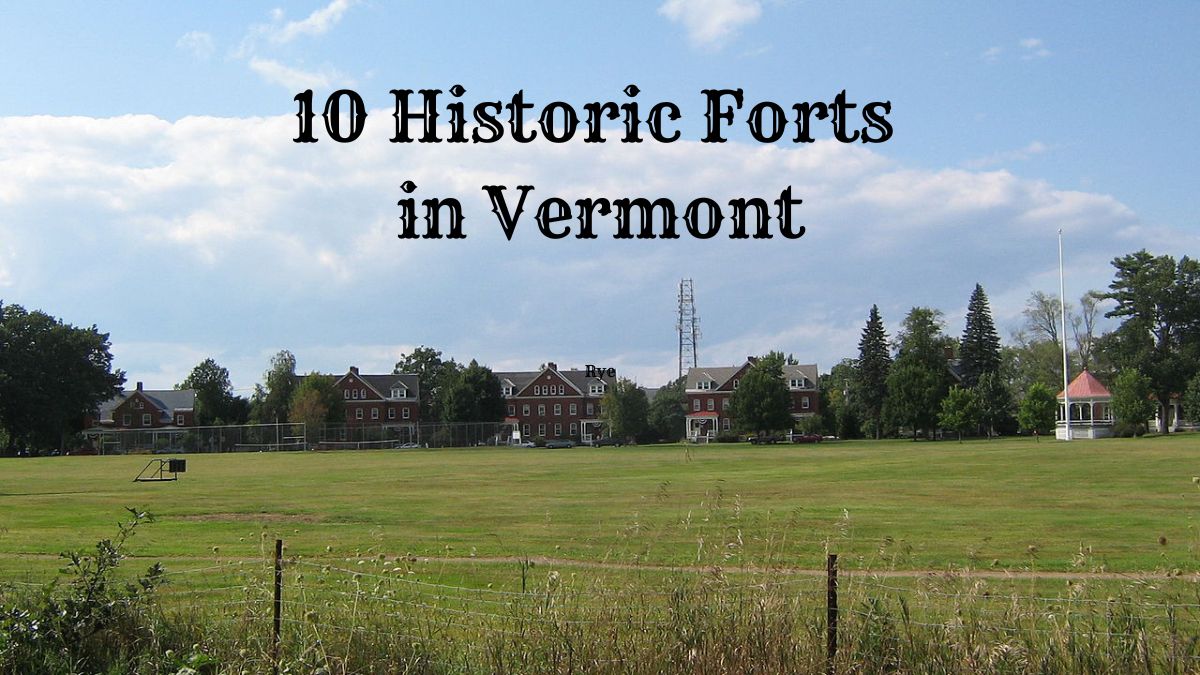Located in the heart of New England, the U.S. state of Vermont boasts a rich history deeply intertwined with the narrative of North America.
With the scenic Lake Champlain to its west and the Connecticut River tracing its eastern border, Vermont has been a pivotal location for early English settlements, conflicts, and historic forts.
In this article historic forts in Vermont, we shed light on these fortified treasures that have shaped the history of Vermont.
Historic Forts in Vermont
1. Fort Dummer
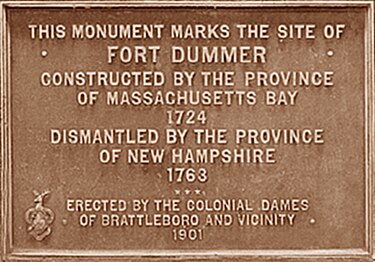
North America’s history is a tapestry of exploration, settlement, and conflict.
Among the first threads in this intricate weave are the European settlers who sought to establish permanent communities on this vast continent.
With its rich waterways and strategic geography, Vermont became an enticing location for these early pioneers.
Vermont’s Strategic Significance
Vermont’s natural waterways offered both opportunities and challenges. The mighty Connecticut River, which snakes its way through New England, was an early exploration and commerce artery.
These water routes became essential trade, communication, and transportation pathways for European settlers. However, they were not merely points of economic interest; they held strategic military significance.
European settlers recognized the need to secure these vital lifelines, which brought about the establishment of forts.
Fort Dummer: The Vanguard of European Settlement
Established in 1724, Fort Dummer stands as a symbol of Vermont’s early European epoch. Situated near the Connecticut River, it wasn’t just a military installation but also a bustling hub of community activity.
As one of the earliest permanent European settlements in North America, Fort Dummer was a beacon, signaling the Europeans’ intent to stay and build a new life in this new land.
However, establishing such settlements often presented challenges. The area was already inhabited by Native American tribes that had lived there for generations.
Their knowledge of the land, resources, and challenges was profound. The rapid European expansion and increasing demands on the region’s resources led to tensions and conflicts.
A Beacon Amidst Tensions
Fort Dummer wasn’t merely a protective barrier against potential European adversaries. It was pivotal during the increasing tensions between European settlers and Native Americans.
The fort became a crucial focal point as interactions between the two groups became frequent, often accompanied by mistrust and misunderstandings.
Diplomacy was attempted, trade agreements were forged, and, unfortunately, conflicts were prepared.
The fort’s presence was a double-edged sword – while it symbolized European dominance and intent, it also became a place where cultures met, sometimes in harmony and sometimes in discord.
2. Chimney Point
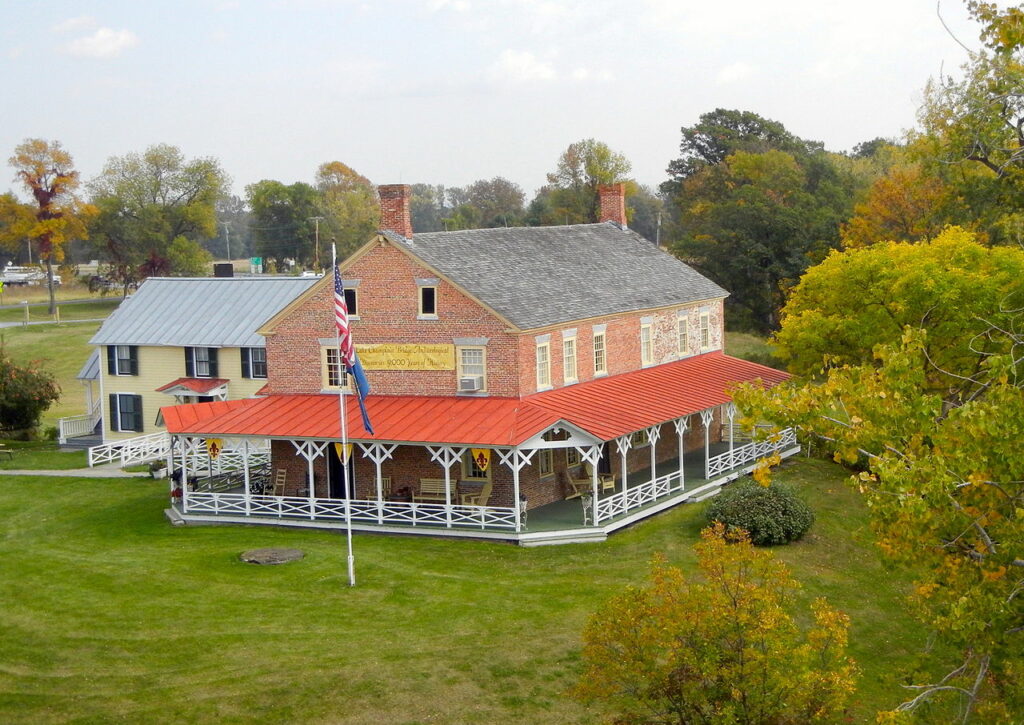
Located along the shores of Lake Champlain, Chimney Point in Addison, Vermont, is a historical gem that tells a tale of thousands of years of human habitation and cultural interchange.
This site’s strategic location made it a focal point for Native Americans, French colonists, British troops, and American settlers throughout various epochs.
Ancient Beginnings
Before European settlers set foot in North America, Native Americans had already recognized Chimney Point’s importance.
Artifacts recovered from the area suggest that indigenous communities have used this point for fishing, trade, and settlement for nearly 7,500 years.
French Colonization
In the early stages of North America’s colonization, the French recognized Lake Champlain as a strategic waterway. By the early 1730s, they established a fort at Chimney Point, marking one of the earliest European settlements in the region.
The remnants of this era are still evident, with several old structures and relics hinting at the French architectural and cultural influence.
British Control and the American Revolution
The mid-1700s saw the rise of British power in the region. Following their victory over the French, the British took control of Chimney Point. The area became a strategic stronghold during the American Revolution, where it played a crucial role in the broader military strategies employed around Lake Champlain.
State Preservation and Legacy
Today, Chimney Point is one of Vermont’s state-owned historic sites, maintained and operated by the Vermont Division for Historic Preservation.
The area is not just a testament to its rich history but also an educational resource. The Chimney Point State Historic Site includes a museum that houses a vast collection of artifacts and exhibits, telling the tale of the area’s long history.
Engagement with the Public
Regular events, special programs, and archaeological digs involve the public in Chimney Point’s ongoing historical narrative. These initiatives ensure that the site is not just a passive relic of the past but an active center of learning and engagement.
3. Mount Independence
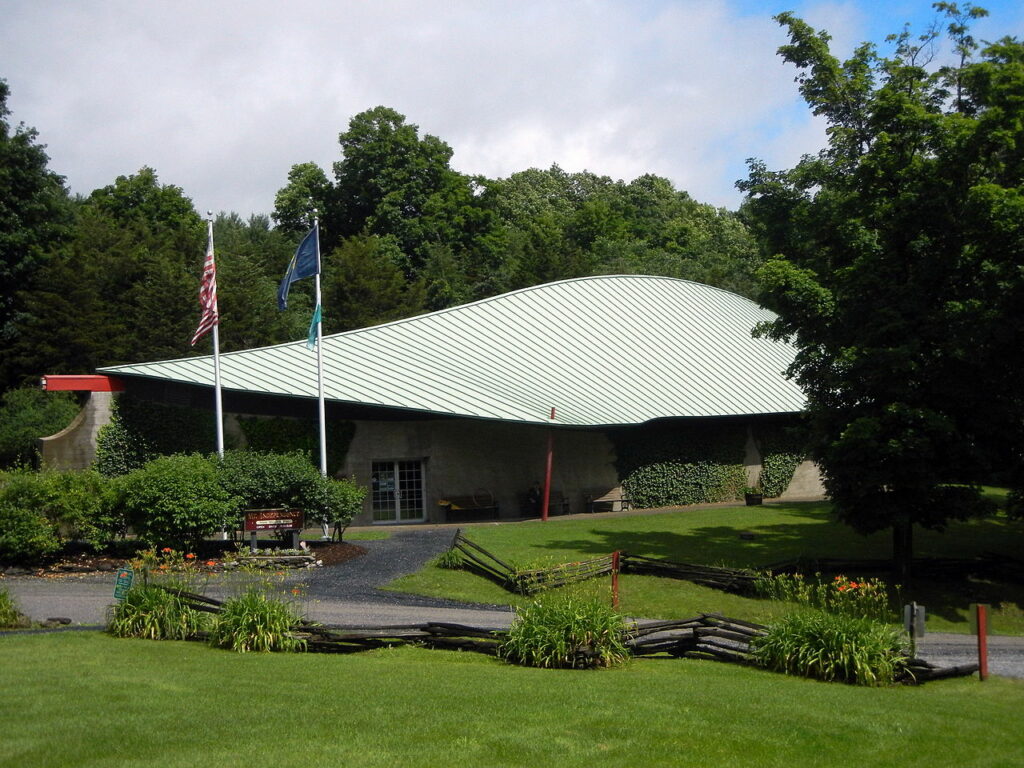
The rugged landscapes of Vermont have been the backdrop to some of America’s most pivotal moments.
Mount Independence stands prominently among these landscapes, echoing the determined cries of revolutionaries and the clash of arms that would birth a new nation.
The Significance of Mount Independence
Strategically located on the Vermont side of Lake Champlain, Mount Independence played a significant role during the American Revolution.
The site was meticulously chosen for its commanding view of the surrounding region, ensuring any enemy movement could be detected from a distance. Its proximity to Fort Ticonderoga across the lake made it a formidable twin fortification, further bolstering the defenses against British forces coming from the north.
The Green Mountain Boys and Fort Ticonderoga
The nearby Fort Ticonderoga already had a storied past by the time the Revolution began. Under the audacious leadership of Ethan Allen and his Green Mountain Boys, a militia named after Vermont’s lush landscapes, this fort was snatched from British control in a surprise assault.
Their success at Ticonderoga emboldened the Revolutionary spirit and highlighted the importance of the Lake Champlain corridor for both sides.
Constructing a Sister Fort
Following the capture of Fort Ticonderoga, the need for an additional fortification on the opposite shore became clear. This led to the construction of Mount Independence. Together, the two forts formed a defensive line of unparalleled strength, acting as gatekeepers against British advances from Canada.
The Flames of Revolution: Battle of Hubbardton and Beyond
While Mount Independence and Fort Ticonderoga were symbols of revolutionary spirit, they were also actively embroiled in military engagements.
One such event was the Battle of Hubbardton, where retreating American forces faced and engaged the British, marking Vermont’s only Revolutionary War battle. Though not a conclusive American victory, this engagement was crucial in delaying British pursuit, which affected the broader Saratoga campaign.
As news of the Declaration of Independence spread, the spirits of the American troops stationed at these forts soared. They weren’t just fighting against British tyranny; they were now battling for the birth of a sovereign United States.
This newfound sense of purpose and strategic positions like Mount Independence would prove pivotal in the war’s outcome.
Legacy and Remembrance
Today, Mount Independence is a testament to those early revolutionaries’ resilience, determination, and vision. Its walls, ramparts, and surrounding landscapes are silent witnesses to the sacrifices and triumphs of those who believed in the dream of a free and sovereign nation.
4. Fort Ethan Allen

Fort Ethan Allen emerges as one of its most distinguished threads as the tapestry of Vermont’s military history unfurls.
Nestled within the state’s picturesque landscape, this fort serves as a beacon of America’s defense evolution from the late 19th century through the World Wars.
A Historical Prelude
Named in honor of Ethan Allen, the audacious leader of the Green Mountain Boys who played a pivotal role in the American Revolution, Fort Ethan Allen holds a name that resonates deeply within Vermont’s revolutionary heart.
But its significance is not merely historical; its foundations are a testament to evolving defense strategies and the nation’s commitment to protecting its territories.
Strategic Importance and Establishment
Established in the 1890s, Fort Ethan Allen was strategically located between Burlington and Essex Junction, Vermont. Recognizing the changing dynamics of warfare and the importance of a well-positioned defense, the U.S. Army sought to create a post that could quickly respond to threats while serving as a training ground for its cavalry and field artillery units.
Roles Beyond Direct Combat
While one might envision forts primarily as bastions against external threats, Fort Ethan Allen’s role transcended frontline defense. It became a bustling hub of military training, ensuring that troops were well-prepared for various challenges.
Throughout the years leading up to World War I and extending to World War II, the fort played a pivotal role in training thousands of American soldiers, ensuring they were battle-ready and equipped with the skills needed for varied terrains and tactics.
The Cavalry and Field Artillery Legacy
The legacy of the fort as a cavalry and field artillery post is profound. Horse-mounted troops practiced rigorous drills, mastering the art of swift, effective combat. As military strategies evolved and the use of mechanized units began to overshadow traditional cavalry, Fort Ethan Allen adapted, reflecting the changing face of warfare.
Transitioning to New Roles
Post-World War II, the fort underwent significant transformations. Parts of the fort transitioned into academic spaces, eventually becoming part of the University of Vermont and Saint Michael’s College.
Moreover, it played a role during the Cold War era, housing various units of the U.S. Air Force. Today, remnants of its military legacy can be seen in the Fort Ethan Allen Museum, which offers insights into its storied past.
5. Fort Vengeance

While Vermont boasts a myriad of famous fortifications, each with its rich tapestry of history, Fort Vengeance, often overshadowed by its more renowned counterparts, holds its unique place in the annals of American military heritage.
Origins and Purpose
Unlike some grander fortresses dotting the Vermont landscape, Fort Vengeance’s beginnings were rooted in immediacy and necessity.
Situated in the present-day town of Rutland, it was initially constructed during the early stages of the War of 1812.
Given the war’s uncertain trajectory and the proximity of British forces in Canada, its primary function was to act as a defensive bulwark against potential incursions.
A Name Steeped in Determination
The fort’s name, “Vengeance,” speaks volumes about the sentiments of its time. In an era characterized by heightened tensions and nationalistic fervor, the fort’s moniker captured the resolve of American soldiers and settlers. They were determined to defend their lands and rights, even facing a powerful adversary like the British Empire.
Architectural Simplicity, Strategic Significance
Unlike the sprawling fortresses that often come to mind, Fort Vengeance was a simpler log construction.
However, its strategic location, overseeing crucial pathways and routes, ensured it could serve as an early warning and defense point against any potential aggressions.
The War of 1812 and Fort Vengeance
During the War of 1812, the fort didn’t witness massive battles or legendary sieges. Instead, it played a quieter yet no less essential role, providing a sense of security to the region’s inhabitants.
Its presence was a deterrent, a symbol of America’s readiness to defend its sovereignty and territories.
Legacy and Modern Times
Fort Vengeance gradually lost its military significance with the conclusion of the War of 1812 and the diminishing threat of border conflicts. Over time, the fort fell into disrepair and was eventually reclaimed by nature.
However, local historians and enthusiasts have worked diligently to ensure its legacy isn’t forgotten.
, markers and plaques serve as silent reminders of the fort’s past, offering insights to those curious about Vermont’s multifaceted military history.
6. Fort Mott
In the historic town of Pittsford, Vermont, Fort Mott is a sentinel to a turbulent time in America’s early history.
Built as a response to the threats of the Revolutionary War, this picket fort bore silent witness to the uncertainties, hopes, and fears of Pittsford’s citizens.
A Grassroots Response to War
Amid the Revolutionary War, the looming presence of British troops and the potential threat from Native American allies of the British Empire made the need for protection imperative.
Fort Mott wasn’t a grand military installation commissioned by the Continental Army; instead, it was the townspeople’s determined response to secure their families and livelihoods.
A Town Evacuated: The Shadow of Hubbardton
The Battle of Hubbardton, fought on July 7, 1777, remains the sole major conflict that touched Vermont’s soil during the Revolutionary War.
The impending clash, Pittsford’s inhabitants made the heart-wrenching decision to evacuate their homes.
The battle’s outcome was a stark reminder of the war’s proximity. On their return, the townspeople’s resolve to protect their town was more vital than ever.
Their solution was to construct a fort that would offer a refuge and a point of defense.
Strategic Positioning on Otter Creek
The fort’s location on the east bank of Otter Creek was no accident. Beyond providing fresh water, the creek acted as a natural barrier, offering additional defense against potential invaders. Its waters would have reflected the constant vigilance of militiamen standing guard, their eyes always looking for signs of approaching danger.
Honoring Leadership: The Naming of Fort Mott
Although the fort had no official name, Fort Mott was later christened in honor of its commander, John Mott. His leadership, vital in guiding the militia and ensuring the safety of the townspeople, was immortalized in the fort’s name, ensuring his place in the annals of Pittsford’s history.
Legacy and Remembrance
Today, while the Revolutionary War has long ended and the threats of that era have faded into history, Fort Mott remains a potent symbol of a community’s resolve.
It is a testament to the unity and determination that drove ordinary citizens to take extraordinary measures to protect their homes and loved ones. Through its walls and grounds, Fort Mott narrates a tale of a town that refused to be cowed by the immense challenges of its time.
7. Fort Warren
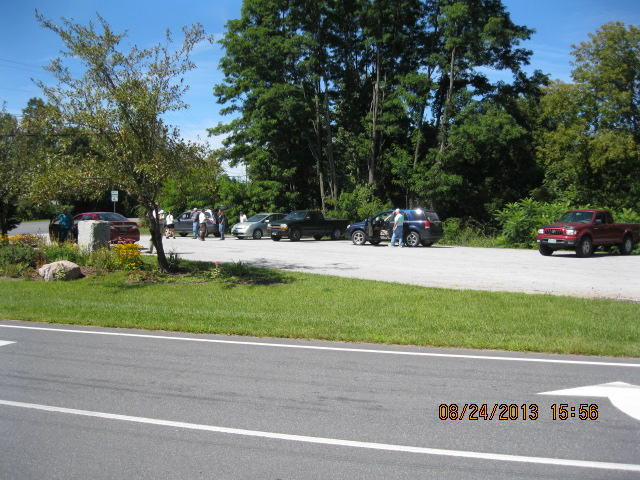
Perched on Georges Island in Boston Harbor, Fort Warren is a lasting monument to America’s military evolution and maritime cities’ significant role during critical junctures in the nation’s history.
With its granite walls and storied past, Fort Warren is a compelling symbol of Boston’s maritime defense and a repository of tales from the Civil War era.
Architectural Marvel and Defense Bastion
Initiated in the early 19th century and completed in the 1860s, Fort Warren’s construction showcases the architectural and engineering prowess of its time. Built primarily of granite, its star-shaped design was aesthetic and strategic, allowing defenders optimal positions to ward off potential sea-based threats.
Civil War Stronghold
While Fort Warren was conceived as a coastal defense against foreign navies, its most prominent role emerged during the American Civil War.
The fort served as a detention center for Confederate prisoners of war, political prisoners, and Southern sympathizers. Its remote location and imposing structure made it ideal to ensure that detainees remained in custody.
The Legend of the “Lady in Black”
No historical site is complete without its share of legends, and Fort Warren is no exception. The “Lady in Black” story is a famous ghost tale linked to the fort.
As legend has it, a Confederate soldier’s wife tried to rescue her husband from the fort but tragically died. Her spectral figure, draped in black, is rumored to haunt the fort’s passageways to this day.
World War Role and Beyond
Post-Civil War, Fort Warren continued to serve as an essential part of America’s coastal defense system. During World Wars I and II, the fort was equipped with updated artillery and was a crucial defense point for Boston Harbor. After WWII, the fort’s active military role began to wane with changing defense dynamics and technologies.
Preservation and Today’s Fort Warren
Recognizing its historical and cultural significance, Fort Warren was designated a National Historic Landmark in the 1970s. Today, it’s integral to the Boston Harbor Islands National and State Park.
Visitors to the fort can explore its expansive grounds, delve into its Civil War history, and perhaps—if lucky—catch a glimpse of the legendary “Lady in Black.”
Related: 10 Historic Forts in Virginia
8. Fort Sainte Anne
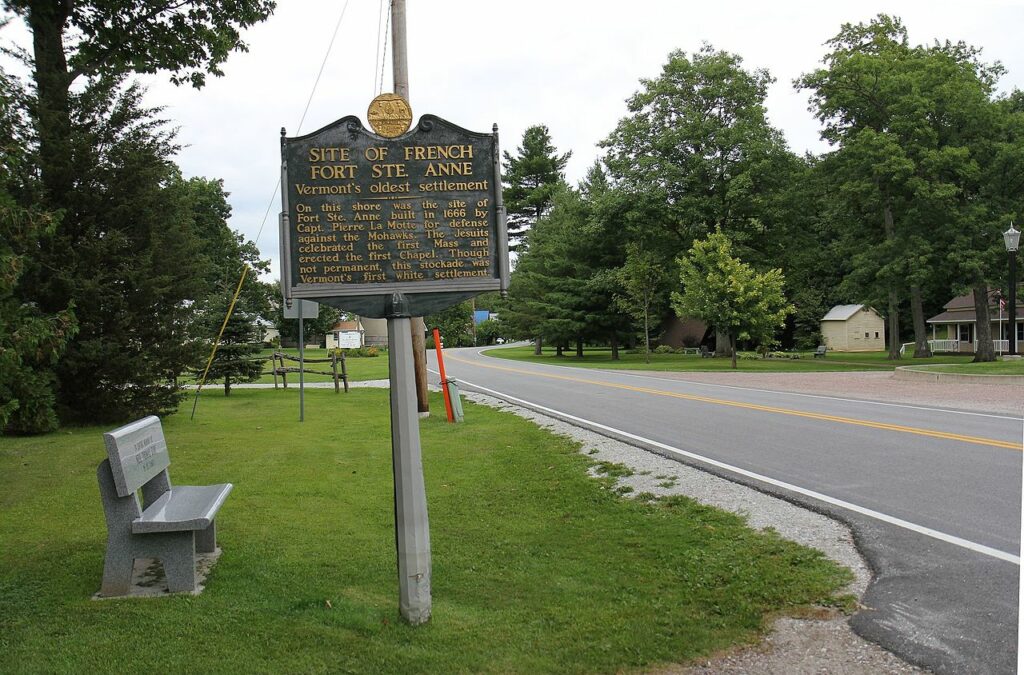
Nestled on Isle La Motte in Lake Champlain, Fort Sainte Anne is Vermont’s first European settlement and a symbol of early New France’s efforts to establish a foothold in the region.
Founding and Purpose
Established by the French in 1666, Fort Sainte Anne was strategically positioned on Lake Champlain’s northernmost island.
The French sought to fortify its access points by recognizing the lake’s value as a central waterway for exploration, trade, and potential military operations. The fort was constructed to protect against potential incursions from Native Americans and the English.
A Brief, Yet Significant Existence
Although operational for only a short period, the fort played a pivotal role in the region’s early European history. It served as a base for French exploration further south and provided a strategic vantage point for monitoring activity on Lake Champlain.
Additionally, the fort was a testament to the tentative alliances between French settlers and local Native American tribes, who sometimes cohabitated and cooperated in trade and defense.
Religious and Cultural Impact
Fort Sainte Anne is significant for its military, exploratory purposes, and religious contributions. The fort housed a chapel, making it the site of the first Catholic Mass in Vermont. This chapel became a beacon of faith and hope for early settlers navigating the challenges and uncertainties of New World life.
Legacy and Preservation
While the original fort no longer stands, its impact on Vermont’s history is indelible. The site has since been transformed into Saint Anne’s Shrine, a place of pilgrimage, reflection, and historical interest.
The shrine and its surroundings glimpse the fort’s past and the broader European regional exploration and settlement history.
9. Champlain Arsenal
Situated in the picturesque town of Vergennes, Vermont, the Champlain Arsenal has a history intertwined with the military evolution of the region, reflecting the changing needs and tensions of its time.
Establishment and Purpose
The Champlain Arsenal was established in the early 19th century following the War of 1812. Recognizing the Lake Champlain corridor’s strategic significance for trade and defense, the U.S. government sought to create an ammunition storehouse to bolster the region’s defense capabilities.
Located near the mouth of Otter Creek, the arsenal was perfectly positioned to supply forces stationed around Lake Champlain quickly.
Architectural Significance
The structures that made up the Champlain Arsenal were substantial, designed for functionality, and with architectural aesthetics in mind. Brick buildings, large storehouses, and surrounding walls showcased the arsenal’s importance while providing necessary protection and security for the stored munitions.
Military Role and Evolution
Throughout the 19th century, the arsenal was crucial in storing and supplying munitions to various forts and military positions around Lake Champlain and the broader region.
However, as military technologies and strategies evolved, the importance of fixed arsenals like Champlain began to wane. By the late 1800s and early 1900s, its role in active military operations diminished.
Today’s Legacy
While the Champlain Arsenal’s heyday as a bustling military storehouse has passed, its historical significance remains. Several of its original structures still stand, serving as poignant reminders of the region’s military past.
The site has undergone various transformations, with some buildings being repurposed for different uses. Efforts by local preservationists and historians have ensured that the legacy of the Champlain Arsenal is not forgotten, with markers and plaques providing insights into its storied past.
10. Fort Ranger
Once located in the rolling hills near Rutland, Vermont, Fort Ranger is a testament to the region’s strategic importance and tumultuous past during the American Revolution.
A lesser-known yet vital military installation, this fort bore witness to the trials and tribulations of a young nation fighting for its independence.
Origins and Establishment
1778 Fort Ranger was constructed during the American Revolutionary War’s height, reflecting the need for a fortified position in Vermont’s heartland.
Its location near Rutland made monitoring and protecting the area against potential British or loyalist incursions crucial.
Command and Leadership
The fort’s first commander, Captain Gideon Brownson, was a man of notable repute. Under his guidance, Fort Ranger became an essential part of the region’s defensive network. His leadership ensured the fort remained operational and ready to repel any threats.
Whitcomb’s Rangers: The Fort’s Elite Defenders
The stationing of Whitcomb’s Rangers at Fort Ranger added another layer to its historical significance. This elite group, known for their guerilla warfare tactics and reconnaissance skills, played a pivotal role in gathering intelligence and launching surprise attacks against British and loyalist forces.
Their presence bolstered the fort’s defensive capabilities, making it a formidable obstacle for any would-be attackers.
The Role of the Daughters of the American Revolution (DAR)
The Ann Story Chapter of the DAR has been instrumental in preserving and promoting Fort Ranger’s history. The stories of Captain Brownson, Whitcomb’s Rangers, and the many soldiers who served at the fort are remembered and celebrated through their diligent efforts.
Their work ensures that future generations understand the fort’s importance in the broader context of the American Revolution and Vermont’s history.
Related: 11 Historic Forts in West Virginia
Conclusion – Historic Forts in Vermont
Vermont’s historic forts stand as silent sentinels to a time gone by, each bearing tales of bravery, strategy, and the ever-evolving tapestry of America’s history.
From their rugged walls to the stories they safeguard, these forts remind us of Vermont’s pivotal role in shaping the nation. As we walk their grounds, we are not just retracing the steps of soldiers and strategists but also reconnecting with the essence of our past.
Our duty and privilege is to preserve these sites, ensuring that future generations can experience the richness of Vermont’s storied legacy.
If you visited any of these forts in Vermont, we would love to hear from you in the comments below.
Frequently Asked Questions (FAQ)
What are the most prominent historic forts in Vermont?
Vermont is home to several significant forts, including Fort Ethan Allen, Fort Dummer, and the ruins of Fort Sainte Anne on Isle La Motte.
Why were these forts built in Vermont?
Most forts in Vermont were strategically built for defense, trade, or to establish a presence during various periods, from colonial times to the Civil War. Their locations often reflect the geopolitical tensions of their respective eras.
Can I visit these forts today?
Yes, many of Vermont’s historic forts are open to the public. Some function as museums or parks, offering guided tours, reenactments, and educational programs.
What can I expect to see during a visit to these forts?
Visitors can explore restored buildings, view historical exhibits, witness reenactments, and learn about the history and significance of each fort. The surrounding landscapes often offer beautiful vistas and opportunities for recreation.
Were any significant battles fought at these Vermont forts?
While Vermont was not the site of major battles like those in other states, skirmishes, and tensions, especially during the colonial era and the Revolution, played out at these forts.
How were these forts used after their active military service?
Post-military, many of these forts were abandoned, while some were repurposed for various uses. For instance, Fort Ethan Allen later became a cavalry post and eventually evolved into a residential and commercial area.
Are there any special events or annual reenactments held at these forts?
Yes, many of the historic forts in Vermont host annual reenactments, history days, and special events to commemorate and educate about their past.
Are guided tours available, and do they require advance booking?
Most of the forts offer guided tours, especially during the tourist season. It’s recommended to check with individual fort websites or contact them directly to inquire about tour schedules and booking requirements.
How can I support the preservation of these historic sites?
Many forts rely on donations, volunteer work, and membership programs. Supporting local historical societies, purchasing from gift shops, or attending paid events can also contribute to their preservation.
Where can I find more detailed information about a specific fort?
Each fort typically has its website or a dedicated page on the Vermont state parks website. Local libraries and historical societies are also excellent resources for in-depth research and information.

Cory is a website owner and content creator who enjoys fishing, history, coin collecting, and sports, among other hobbies. He is a husband and father of four.
Romans 15:4 For whatever was written in former days was written for our instruction, that through endurance and through the encouragement of the Scriptures we might have hope.

